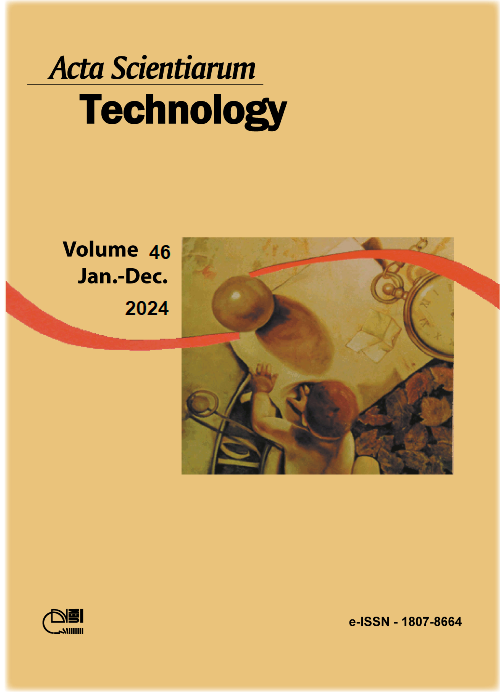Citric acid production by Brazilian garlic Aspergillus welwitschiae strains using orange residues
DOI:
https://doi.org/10.4025/actascitechnol.v46i1.69765Keywords:
Citric acid; Orange residue; Aspergillus welwitschiae.Abstract
The global production of citrus fruits has expressively grown resulting in large amounts of residue. Orange residues are rich in carbon and could be used as substrates for production of biomolecules such as citric acid. In this study, wild and mutant Aspergillus welwitschiae strains isolated from Brazilian garlic were used to produce citric acid from orange residues, using solid-state fermentation. The results showed that the mutant A. welwitschiae UELAs 15.262/35 produced great amount of citric acid in the fourth day of solid-state fermentation using total and reducing sugars and producing cellulases. On the other hand, there was no production of citric acid by wild A. welwitschiae UELAs 15.262. The use of total and reducing sugars and the production of cellulases by A. welwitschiae UELAs 15.262 were detected, suggesting the use of carbon sources for the production of other metabolites. The great use of reducing sugars and cellulases production by A. welwitschiae UELAs 15.262/35 indicated the consume of carbon sources from the orange residue to produce citric acid at early times of fermentation. These findings lead to the possibility of biotechnological valorization of orange residues for acid organic production by A. welwitschiae strain.
Downloads
Downloads
Published
How to Cite
Issue
Section
License
DECLARATION OF ORIGINALITY AND COPYRIGHTS
I Declare that current article is original and has not been submitted for publication, in part or in whole, to any other national or international journal.
The copyrights belong exclusively to the authors. Published content is licensed under Creative Commons Attribution 4.0 (CC BY 4.0) guidelines, which allows sharing (copy and distribution of the material in any medium or format) and adaptation (remix, transform, and build upon the material) for any purpose, even commercially, under the terms of attribution.
Read this link for further information on how to use CC BY 4.0 properly.















8.png)




